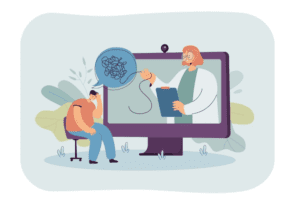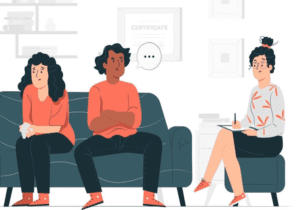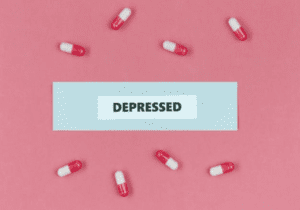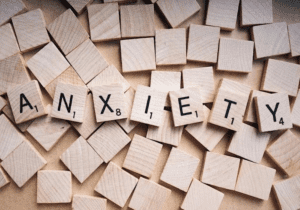Learn Exactly What Panic Attacks Are And Some Effective Ways to Manage Them
This article has been researched and written by Dalea Alawar. AI has not been used in producing this article.
The confusing reality of a panic attack: your body’s built-in alarm system has gone off when there’s no real threat. It feels very frightening in the moment! In this article, I aim to help you understand how and why a panic attack happens, and what you can do to switch off that alarm system in your brain. First, let us start with explaining what a panic attack is. A panic attack is like your body’s fire alarm going off by mistake. This alarm is designed to keep you safe from danger, also called the fight-or-flight response. When it goes off at the correct time, it’s extremely helpful and often lifesaving, such as how alert you become when a car swerves at you.
But sometimes, this alarm gets triggered when there’s no actual danger, maybe because you’re stressed, tired, worried, or your body is sensitive to certain changes (like how coffee can cause a racing heart). When this happens, the brain misreads normal body sensations as a sign of danger and sets off the safety alarm.
Here are some symptoms of a panic attack: Rapid heartbeat; shortness of breath; sweating or shaking; dizziness or lightheadedness; or a strong feeling of dread.
Because the symptoms feel so intense and uncomfortable, your mind may start thinking something terrible is happening, like a heart attack or losing control, which makes the panic stronger. The important thing to remember is that panic attacks are not actually dangerous, and they always pass, even if they feel scary.
Here are some tips to ease the intensity of a panic attack:
1. Empty out all the air from your lungs and then breathe at a slower rate. Rapid breathing makes your panic stronger. It also feels harder to breathe because you aren’t emptying out all the air from your lungs before you take in more air. So, blow out all the air, as if you are deflating a balloon, and then take slower breaths, so you can go back to breathing naturally. If you’re having a hard time doing this, breathe in and out of a straw or into a paper bag.
2. Relax your muscles. This sends the message to your brain that you are not actually in real danger.
3. Put your hands in icy cold water: Or splash very cold water on your face or put an ice pack on your neck. This sudden change in your body’s temperature can snap your body out of “danger” mode.
4. Get out of your head and into your present moment: What fuels a panic attack are all the racing thoughts you are having. Shift attention away from your mind by engaging in the 5-4-3-2-1 technique:
- Name 5 things you can see, 4 things you can touch, 3 things you can hear, 2 things you can smell, and 1 thing you can taste.
Panic attacks can feel intense and frightening, but they are not harmful. The more you practice calming techniques, the more confident you will feel in handling them. Over time, your body learns that these symptoms are just false alarms, not real emergencies.
Gentle Parenting: What is it and How to Try it Yourself
When it comes to raising children, no one has all the answers. Every parent and child have unique challenges and needs. Navigating these individual circumstances along with ever-changing environments, such as school …
How to Improve Your Relationship with Your Children – A Psychologist’s Guide
The modern family’s lifestyle leaves us shuffling from school to sports practice, family events, visiting friends, and everything in between. As society evolves to become more on-the-go and technologically advanced, w…
Tips for Communicating With Someone Who is Depressed
Knowing what to say to someone who is struggling with depression can be challenging. Perhaps you are afraid you might say the wrong thing. Or maybe you will say something that makes their day even worse? Maybe you fee…
Who Can Benefit From Couple Counseling?
Relationships are far from perfect. Each person brings his or her own ideas, values, opinions, and personal history into a relationship, and they don’t always match their partner’s. Those differences don’t necessaril…
What is EMDR Therapy and How Does it Help People?
Since the days of Freud, we’ve come to expect that managing our trauma is a lifelong journey. However, this is not the case. Eye Movement Desensitization and Reprocessing therapy (EMDR therapy) was developed in 1990 …
Everything You Need to Know About Couples Therapy
It’s perfectly expected for couples in relationships to face challenges from time to time. Every relationship has its unique needs and challenges. Couples see therapy for a number of unique reasons. From miscommunicat…
Does Social Media Cause Depression?
According to recent estimates, roughly 4 billion people worldwide use various social media platforms, including Facebook, Twitter, Instagram, and LinkedIn. It’s not hard to believe. When you take a look around a crowd…
Child Development: Play Therapy in Dubai
Every child deserves to feel safe, empowered, understood, connected, and loved. Play therapy is based on the foundation of providing a safe environment for children to process their emotions and develop the social, em…
The Future of Depression Treatment
According to the World Health Organization (WHO), depression impacts more than 264 million people globally. Once diagnosed, depression treatment can be by medications, psychotherapy, or a combination of the two. While…
How to Talk to Your Therapist When You Have Social Anxiety
Social anxiety disorder (SAD), also called a social phobia, is characterized by intense fear or anxiety of being negatively evaluated, judged, or rejected in a social situation. Individuals with social anxiety often …











